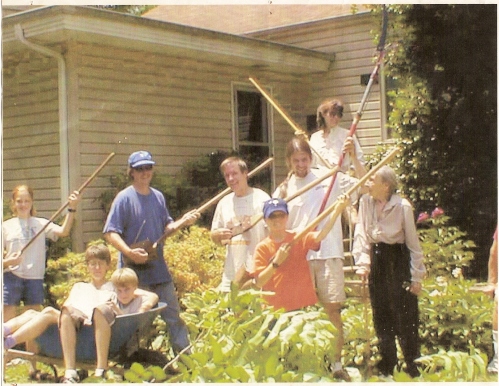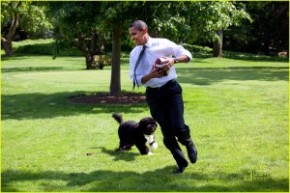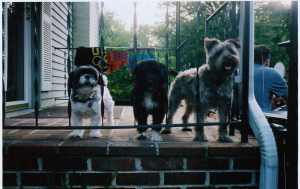“Ruby Begonia, I’ve got a job for you.” The command echoed off the AmesHigh School dull-colored hallway walls as I walked toward the tall, slender biology teacher, Mr. Dunn.
As I heard my nickname, my early morning expression of half-closed, sleepy eyes transformed into raised eyebrows and alertness. Since I worked full-time as the science department teacher’s aid with a salary of $4,000 per year without benefits, my coffers could benefit from additional income. But how would I manage a full-time job and two part-time jobs? In addition to my science position, every Friday and Saturday night, I rode my bike to Golds Veritable Quandry, an upscale restaurant on Main Street in downtown Ames, where I worked as a sou chef and received one important perk: dinner, limited to certain items free to employees. “Our Fine Filet – thick tenderloin wrapped in bacon” at $9.45 was off limits. “The Crepe Dianne – with salad and bread” or “The Golden Quiche – cheese, bacon, egg & green pepper pie, served with salad and bread” were elegant selections to this Iowa farm girl. I’d consumed plenty of steaks from our farm-raised steers, but had never heard of quiche or crepes.
Additionally, I frequently worked during the champagne brunch on Sunday mornings. I was certain my schedule had no space for another job. Still I asked curiously, “What do you have on your mind, Mr. Dunn?”
I anxiously waited for his answer. This energetic man with a scruffy reddish beard and face full of freckles topped the scale of happiness. His long fingers touched on the pulse of every creative activity in our small college town. The high school students adored his positive, fun-loving spirit; I did also.
“Well, we need a Market Master for our local Farmer’s Market,” Mr. Dunn began.
I wondered what a Farmer’s Market was and what were the responsibilities of a Market Master. Instead of seeking clarification, I asked, “What day and hours do they need a Market Master?”
“Every Saturday morning through the spring, summer, and fall. It’s located at the old railroad depot on Main Street.”
On Friday night, after mopping and cleaning the kitchen, I usually returned home around 1:30 am. That was enough time to catch some sleep and ride my bike back downtown. Still, I paused.
Encouragement flew from Mr. Dunn’s mouth. “Oh, Ruby, it’s a great job for you. You’ll love it.”
Once I had asked Mr. Dunn, “Who is Ruby Begonia?”
He curtly replied, “Oh, some old time radio character.”
The origin of Ruby Begonia was a mystery. Some say Ruby Begonia was first created as a character for the “Amos & Andy Show” which ran first on radio and then television from 1928 to 1966. Kingfish, when caught in a lie, would say, “Do duh name Ruby Begonia ring a bell?”
For me, another mystery was why Mr. Dunn nicknamed me Ruby Begonia. From his endearing tone, I liked being Ruby and wished I were one of Mr. Dunn’s kids living with him and his wife in their large, yellow two-story home near downtown.
I sought more details. “What does a Market Master do on Saturday mornings?”
His green eyes sparkled, and I realized that he was drawing me into accepting the job. “You’ll need to arrive shortly before eight, collect the rent money from the vendors and show them where to display their produce and goods. The old depot has a large overhang which protects the exhibit tables from rainy weather. You’ll stay until all the vendors depart, which is shortly before noon.”
Starting to piece this information together, I concluded that a Farmer’s Market was what served as a garden for city folk. Little did I know that, like Golds Veritable Quandy’s, this part-time job would help a “poor starving” college graduate. I accepted. Mr. Dunn smiled. “Ruby, good decision. I’ll meet you there on Saturday.”
The Friday night before my new job, the restaurant closed and the wait staff departed. In a quiet restaurant, the fun began. The chef walked to the radio, always tuned to the college station, turned the knob to nearly 100 decibels. I grabbed my mop and danced across the kitchen floor to blues and rock and roll. Once the floor shone as bright as a metal grain bin in full sun light, I rushed out the back door and pedaled through the dark, quiet streets to Pammel Court for a short night of rest.
Much too early, the alarm rang at 7:00 am. Retracing my path to downtown, I arrived to greet a small group of middle aged vendors. Mr. Dunn introduced me, using my “real” nickname, Moni. I assigned a space to each vendor, and they began spreading out their fresh vegetables and fruit, baked goods, jams, and jellies.
In junior high school, Pat Nolte, the mother of my best friend Cindy, had taught me how to bake bread. Pat never purchased bread and the smell of bread baking in her oven set off my salivary glands. I loved homemade bread and frequently baked it throughout my high school years. Our family always ate one loaf with melted butter, and sometimes jam, immediately out of the oven. My bread baking came to a halt during college and I survived on cheap grocery store bread, a poor substitute.
I watched as the vendors unloaded their vehicles and carefully arranged their goods. Some folks carried boxes of vegetables – colorful greens, cucumbers, early tomatoes, radishes with the leaves attached. All the same produce that my family grew in the black, loamy soil of our garden. Then, I noticed a short-plump lady spreading out golden brown loaves of homemade bread. The aroma of the Nolte kitchen seeped into my soul. My salivary glands swelled. “Oh, I want some of that bread. But I can’t afford it.” I whined to myself. How would I make it through the morning staring at those loaves? And this lady signed up for a table throughout the whole season. “Oh dear, this job will be torture.”
I scanned down the tables. Glass jars were shining from dappled light that contained strawberry and raspberry jam and elderberry jelly with handwritten labels. Thoughts of raspberry jam on homemade bread caused my swollen salivary glands to secrete whatever they produce. “I must find a higher paying job so I can afford bread and jam,” my thoughts continued.
I silently drooled over the baked goods while a few shoppers chatted with the vendors and purchased items. However, it wasn’t like the Greensboro Farmer’s Market on Yanceyville Street where, today, I seldom shop because the throngs annoy me. The low attendance of the Ames Farmer’s Market during the mid-1970s suited me perfectly, and proved beneficial.
The relaxed nature of the Market allowed the vendors to chat with each other and with me. We covered all subjects – local gossip, politics, college news, athletics. Even though they were old enough to be my parents or, for that matter, grandparents, I enjoyed conversing with them in the shade of the depot overhang. The slow-paced morning moved toward noon and the vendors began boxing up their unsold goods.
They commented on my mode of transportation and asked how far I had to ride home. Evidently, they also sized up the volume of my backpack. The plump lady was the first to ask, “Would you like a loaf of bread?”
My quick response was, “Does a one-legged duck swim in circles? Yes!”
Within seconds, another lady spoke, “How about some jam?”
“I’d love a jar!”
Each vendor offered me a little some thing; I graciously accepted and thanked them profusely. What a red letter day for me; a young lady struggling to begin her career on low paying jobs while paying back college loans. After the vendors headed home to their farms, I wiggled my shoulders through my backpack straps and could hear Mr. Dunn’s voice, “Ruby Begonia, you made out all right.”























